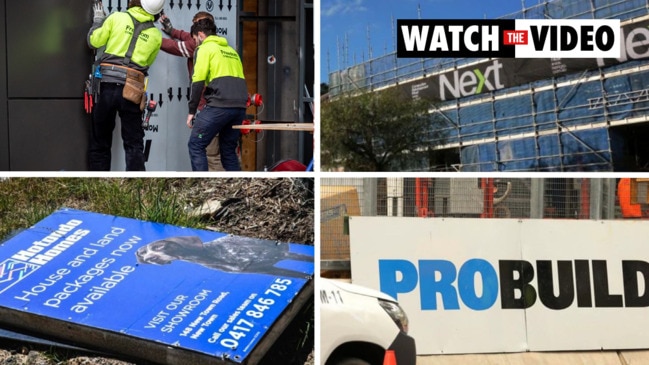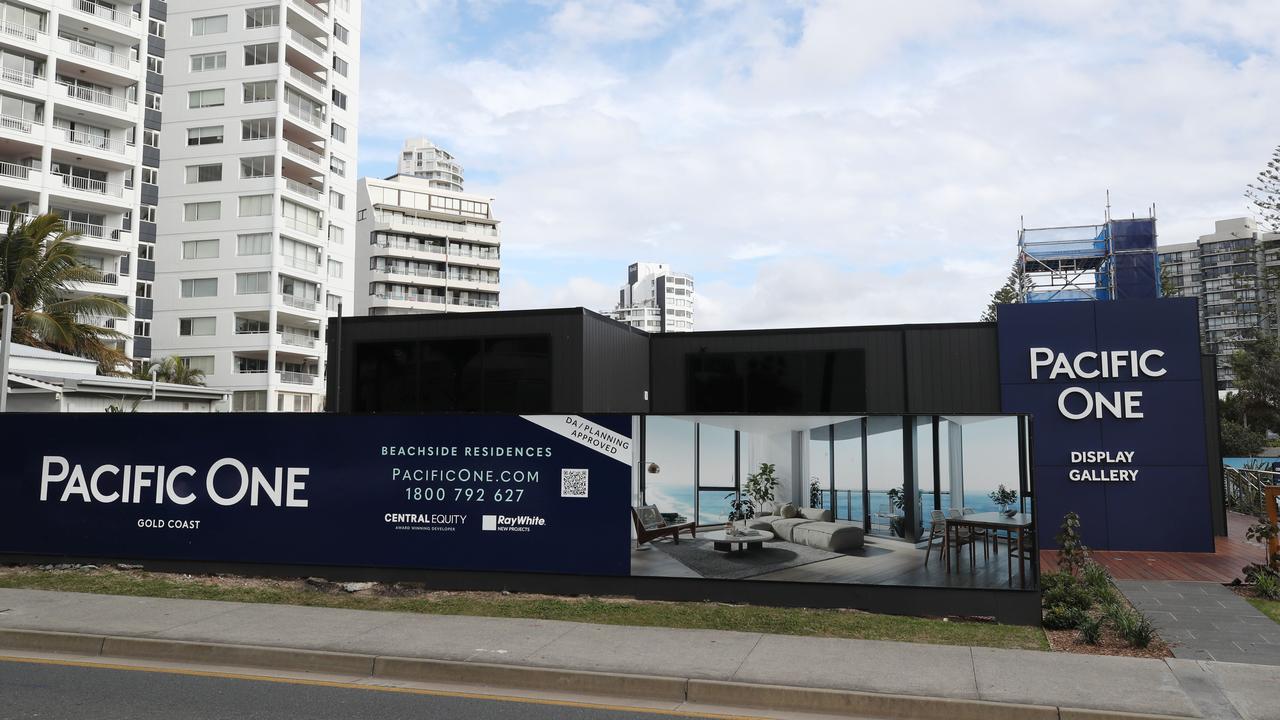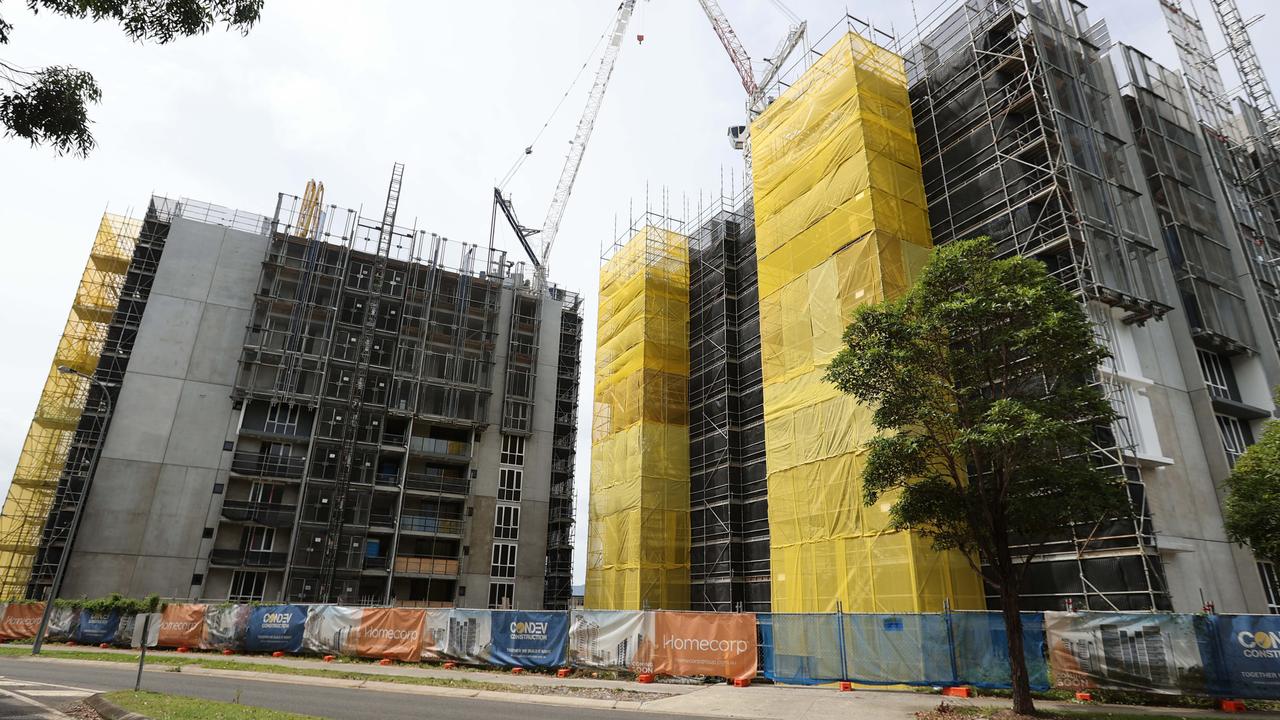Melbourne developer Central Equity abandons $500m Gold Coast apartment towers
Another casualty has hit the building industry with a developer dumping plans for 486 homes on the Gold Coast, blaming the construction crisis.

A Melbourne developer has abandoned plans to build a $500 million apartment tower on the Gold Coast blaming the crisis in the building industry and surging construction costs for making the project unprofitable.
The development was set to kick off this year featuring 486 apartments in a 56-storey tower, which was known as Pacific One, and was due to be built on a beachfront block in Surfers Paradise.
Apartments had been sold from a starting price of $650,000 each.
The developer called Central Equity refused to reveal how many apartments had been sold off-the-plan for the project, but said buyers had been notified that the build had been cancelled and their deposits had been refunded.
Central Equity has been operating for 35 years and has completed 85 developments but this will be the first time a project has not been completed by the developer.
It said that “industry sources” had claimed that unit prices would need to rise by 20 per cent to cover increased labour and building costs and it was better not proceed in a climate of “economic turbulence”.
“As a result of ongoing discussions with builders and quantity of surveyors regarding the global supply chain turmoil and Queensland construction industry crisis, Central Equity has decided not to proceed with the development of their Pacific One apartment tower on the Gold Coast,” Central Equity said in a statement.
“The malaise facing builders, including staff shortages and supply chain disruption, has resulted in the unprecedented escalation of construction costs for developers, making Pacific One economically unviable.
“The decision was not a demand-side issue, and all deposits will be returned to buyers and prospective buyers.”

Pacific One was to be Central Equity’s first apartment project outside of Victoria, after it had completed 80 high rise towers in and around Melbourne’s CBD in the past three decades.
However, the developer will keep the Surfers Paradise site and may redevelop at a later date.
Central Equity has almost completed 590 apartment project in Melbourne and also has four major housing estates under construction.
Experts have warned that more high rise projects could fall over in the planning stage because of rising costs, particularly as the developments take a long time to build and only certain builders can take them on.
Sharp interest rate rises have also placed further pressure on the already fraught construction industry.
“The industry has been plagued by rising crude oil and electricity prices, and supply shortages in key goods, most notably timber,” said IBISWorld senior industry analyst Matthew Reeves. “Numerous flood events in New South Wales and Queensland have exacerbated these issues over the past six months. The floods have disrupted the import and transport of goods around Australia, and have damaged and delayed building projects.”
The construction industry, which has been plunged into crisis with a spate of collapses this year, as building giants and smaller operators alike are impacted.

Earlier this year, two major Australian construction companies, Gold Coast-based Condev and industry giant Probuild, went into liquidation.
The grim list has continued to grow as a number of other high profile companies also collapsed, including Inside Out Construction, Dyldam Developments, Home Innovation Builders, ABG Group, New Sensation Homes, Next, Pindan, ABD Group, Pivotal Homes and Solido Builders, Waterford Homes, Affordable Modular Homes and Statement Builders.
Then two Victorian building companies were further casualties of the crisis having gone into liquidation at the end of June, with one homeowner having forked out $300,000 for a now half-built house.
Snowdon Developments was ordered into liquidation by the Supreme Court with 52 staff members, 550 homes and more than 250 creditors owed just under $18 million, although it was partially bought out less than 24 hours after going bust.
Dozens of homeowners and hundreds of tradies were left reeling after a Victorian building firm called Langford Jones Homes went into liquidation on July 4 owing $14.2 million to 300 creditors.

Hotondo Homes Horsham, which was a franchisee of a national construction firm, collapsed last week affecting 11 homeowners, the second franchise to collapse after the Hobart branch went under earlier this year with $1.3 million in outstanding debt.
Scores of homeowners have been hit hard by the crisis too.
A Sydney family face never being able to build their dream home after their builder collapsed in March owing millions and the cost of their home’s construction jumped to $1.9 million, a whopping $800,000 more than the original quote.

Commercial credit reporting bureau CreditorWatch has found the construction industry’s key credit metrics, such as late payment times and insolvencies, are set to worsen over the next 12 months as the impact of high-profile company collapses leaves a lasting impression.
“All key credit metric indicators from insolvencies to payment behaviours are pointing to some tough times ahead,” said CEO of data company Open Analytics James O’Donnell.
“The industry-specific challenges of late payment times is of particular concern for small and medium enterprises subcontractors and suppliers, which are looking to deal with builders that pay promptly, an increasingly difficult task with approximately 12 per cent of construction companies averaging more than 60 days in payment arrears.
“This blowout in repayment times is far greater than any other sector, representing the almost normalisation of late payments and razor-thin margins in the industry.”
A healthy construction industry is vital to a strong economy and ongoing growth, with the sector accounting for the employment of almost nine per cent of Australian workers and 7.5 per cent of Australia’s GDP.






